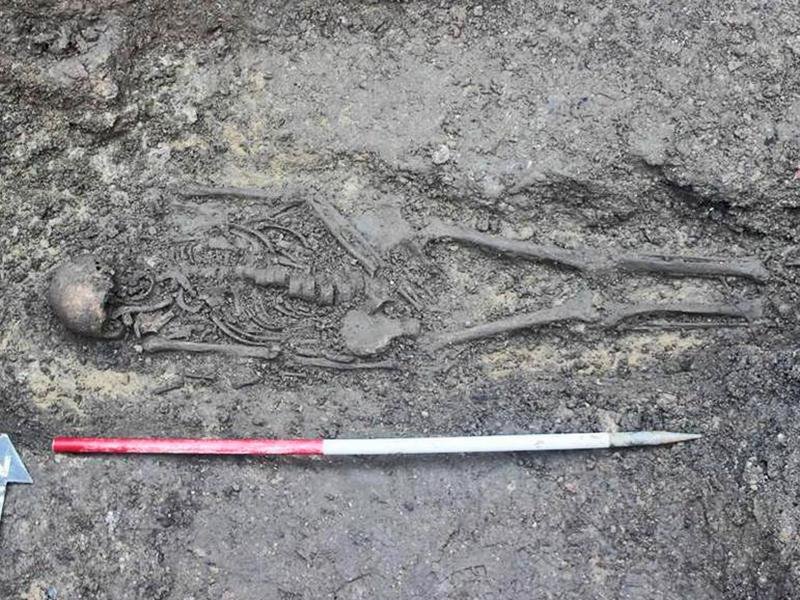Cotswold Archaeology has made a remarkable historical discovery near Malmesbury Abbey, unveiling the first confirmed Anglo-Saxon burials in the town’s history. While excavating the site of the Old Bell Hotel, located adjacent to the abbey, archaeologists uncovered the remains of 46 individuals, including 24 skeletons found in their original burial positions. Radiocarbon dating of four of these skeletons indicates they date back to AD 670-940, aligning with the early days of the abbey in the late 7th century.
Table of Contents
ToggleHistorical Context
This site may have been associated with the Benedictine monastery that played a vital role in the early Christian community in England. While the abbey itself served as a significant religious center, the skeletons likely represent lay community members who supported monastic life, including laborers, artisans, and their families. Notably, the majority of the burials were children, with only seven adults—three of whom were male—suggesting that the community may have faced challenges such as childhood mortality and health issues prevalent in that era.

Cultural Significance
This exciting discovery coincides with Malmesbury’s ‘Athelstan 1100’ event, celebrating the legacy of the Anglo-Saxon king buried at the abbey in AD 939. King Athelstan is often regarded as the first King of England, and his influence is integral to the region’s history. The festivities included the ‘Big Athelstan Dig,’ in which Cotswold Archaeology excavated 13 test pits throughout Malmesbury, further enriching the understanding of the town’s historical landscape and its connections to the Anglo-Saxon period.

Ongoing Research
Currently, post-excavation analysis is underway, promising to provide further insights into the lives of Malmesbury’s earliest residents and their connection to this significant historical monastic community. Researchers are examining burial practices, diet, health, and social structures through the study of the remains and associated artifacts. These findings are expected to shed light on the daily lives of those who lived in and around Malmesbury during the Anglo-Saxon period, contributing to a broader understanding of early medieval England and the societal structures that existed at that time.

Conclusion
The discovery of these Anglo-Saxon burials not only enriches the historical narrative of Malmesbury but also highlights the importance of archaeological research in uncovering the lives of our ancestors. As analysis continues, we can expect to learn more about the community that thrived around Malmesbury Abbey, further deepening our appreciation for this pivotal chapter in England’s history. This significant finding underscores the need for ongoing archaeological endeavors, as each discovery can reveal untold stories and enhance our understanding of the complex tapestry of human history.

